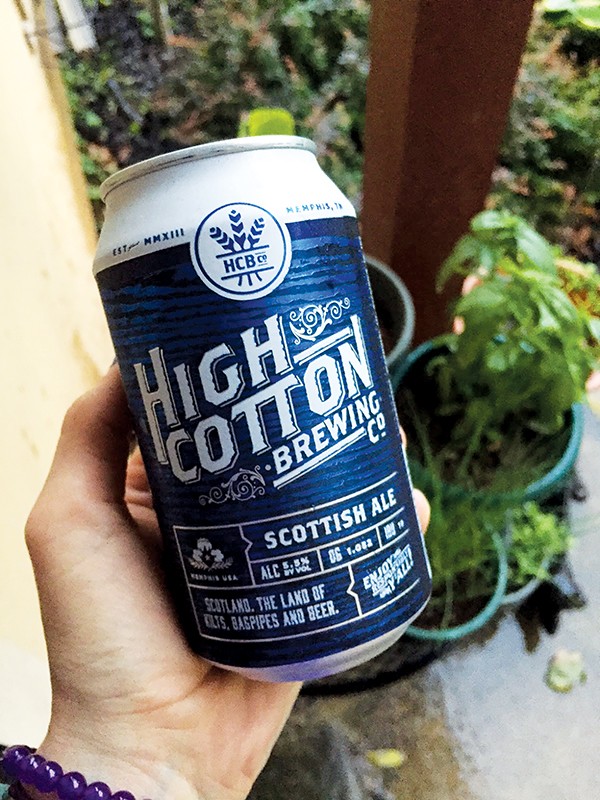It was raining like stink and I was fighting with my tweed coat when I stepped into the taproom at High Cotton Brewing (HCB), so I felt Scottish, though being something of a skinflint, I always feel that way. I ordered one of HCB’s standards, its Scottish Ale. Because nothing in the booze industry can be straightforward, this is not to be confused with Scotch Ale. Like “English Muffins” in Britain, neither term is used much in the old country.
Calling a person Scotch is something that even the British concede is insulting as hell. The people are Scots — and they will correct you. Still, this is about as good a way as any to keep the two straight. Scottish Ale is the lighter of the two, with a lower alcohol content, but it still delivers a big flavor — a beer you can drink all night, as it were. Scotch Ale — also called a Wee Heavy — is made from the same ingredients, in the same style, only more so. It is a big, booming brew, higher in alcohol — the bagpipe of ales, these days, described as the IPA of the malt. After a couple, you’ll be gripped with the twin urges to shave your tongue and then tell them what you really think. Do us all a favor and resist these impulses.
For all the associations the world has with Scots and their uisgebeathas (water of life) these rich ales have a much longer history than the country’s whiskey. There is evidence that the Picts were producing heather beer long before the Romans showed up to plant their vineyards. There is even a legend of a Pictish chieftain taking his beer recipe to the grave with him. The art of distillation, on the other hand, arrived in Scotland with St. Columba in 563. Two years later, in 565, the same monk claimed to have seen a “water beast” in Loch Ness. You do the math.
 Bianca Phillips
Bianca Phillips
Whisky-fueled fish tales aside, up until the 19th century, most beer brewing in Scotland was done by women, old-school “housewives,” if you will. They worked with what ingredients were handy. The unforgiving climate produced a lot of barley and oats (that were dried with peat fires), but precious little hops. As a result, the ales were smoky and very malty. Having a great many other things to do, these put-upon home brewers also boiled the wort (the beer before we call it beer) for much longer than their southern counterparts, which carmelized the ingredients into that rich color and flavor that shows up in your glass. The last twist was the use of ale yeast, followed by cellaring the beer in a climate more akin to Bavarian lagers.
I asked Cayleigh, the taproom manager at HCB about their version of this classic. “We love the style,” she says, “but our take on it is a little different.” Cayleigh will modestly tell you she’s not an expert, but she knows all the technical answers, anyway. HCB does a little roasting on the front end; this lightens the ABV (there is a state law to abide) but keeps that big flavor, one that will go with hearty foods. “Ours is made to pair well with, well, barbecue,” she says. And it does. These are rich flavors that rest on a complex sweetness. The nice thing about HCB’s Scottish Ale is that you up fill up on pork, not beer.
For the more traditionally minded, there is always the maxim, “What grows together goes together.” Try one with that infamous highland widow-maker the Scotch Egg: It’s a hard-boiled egg wrapped in a sausage and deep-fat-fried. On trying one for the first time, an uncle of mine exclaimed, “Where have you been all my life!” Evidently, in Scotland.